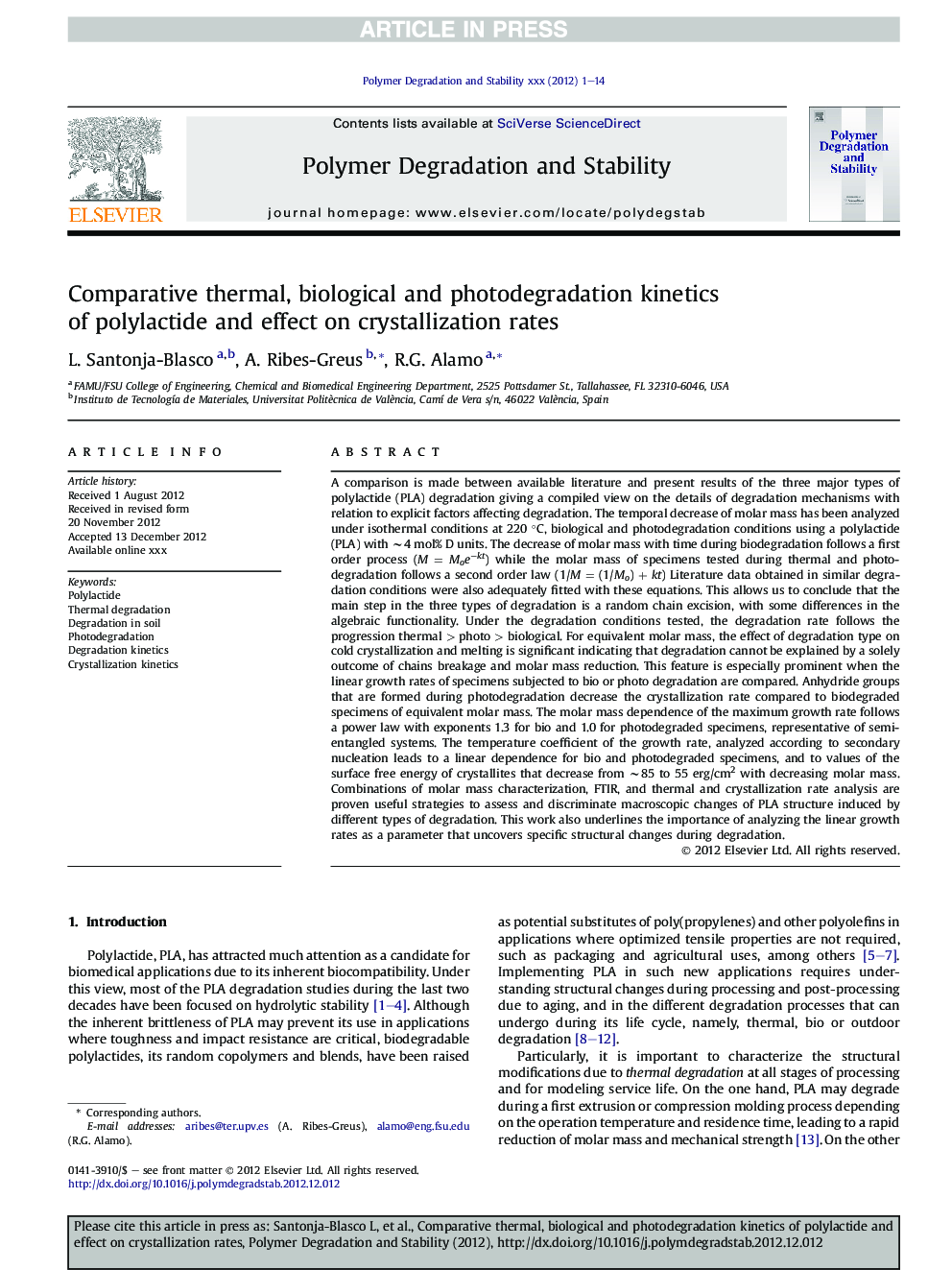| Article ID | Journal | Published Year | Pages | File Type |
|---|---|---|---|---|
| 5202294 | Polymer Degradation and Stability | 2013 | 14 Pages |
Abstract
A comparison is made between available literature and present results of the three major types of polylactide (PLA) degradation giving a compiled view on the details of degradation mechanisms with relation to explicit factors affecting degradation. The temporal decrease of molar mass has been analyzed under isothermal conditions at 220 °C, biological and photodegradation conditions using a polylactide (PLA) with â¼4 mol% D units. The decrease of molar mass with time during biodegradation follows a first order process (M = Moeâkt) while the molar mass of specimens tested during thermal and photodegradation follows a second order law (1/M = (1/Mo) + kt) Literature data obtained in similar degradation conditions were also adequately fitted with these equations. This allows us to conclude that the main step in the three types of degradation is a random chain excision, with some differences in the algebraic functionality. Under the degradation conditions tested, the degradation rate follows the progression thermal > photo > biological. For equivalent molar mass, the effect of degradation type on cold crystallization and melting is significant indicating that degradation cannot be explained by a solely outcome of chains breakage and molar mass reduction. This feature is especially prominent when the linear growth rates of specimens subjected to bio or photo degradation are compared. Anhydride groups that are formed during photodegradation decrease the crystallization rate compared to biodegraded specimens of equivalent molar mass. The molar mass dependence of the maximum growth rate follows a power law with exponents 1.3 for bio and 1.0 for photodegraded specimens, representative of semi-entangled systems. The temperature coefficient of the growth rate, analyzed according to secondary nucleation leads to a linear dependence for bio and photodegraded specimens, and to values of the surface free energy of crystallites that decrease from â¼85 to 55 erg/cm2 with decreasing molar mass. Combinations of molar mass characterization, FTIR, and thermal and crystallization rate analysis are proven useful strategies to assess and discriminate macroscopic changes of PLA structure induced by different types of degradation. This work also underlines the importance of analyzing the linear growth rates as a parameter that uncovers specific structural changes during degradation.
Related Topics
Physical Sciences and Engineering
Chemistry
Organic Chemistry
Authors
L. Santonja-Blasco, A. Ribes-Greus, R.G. Alamo,
